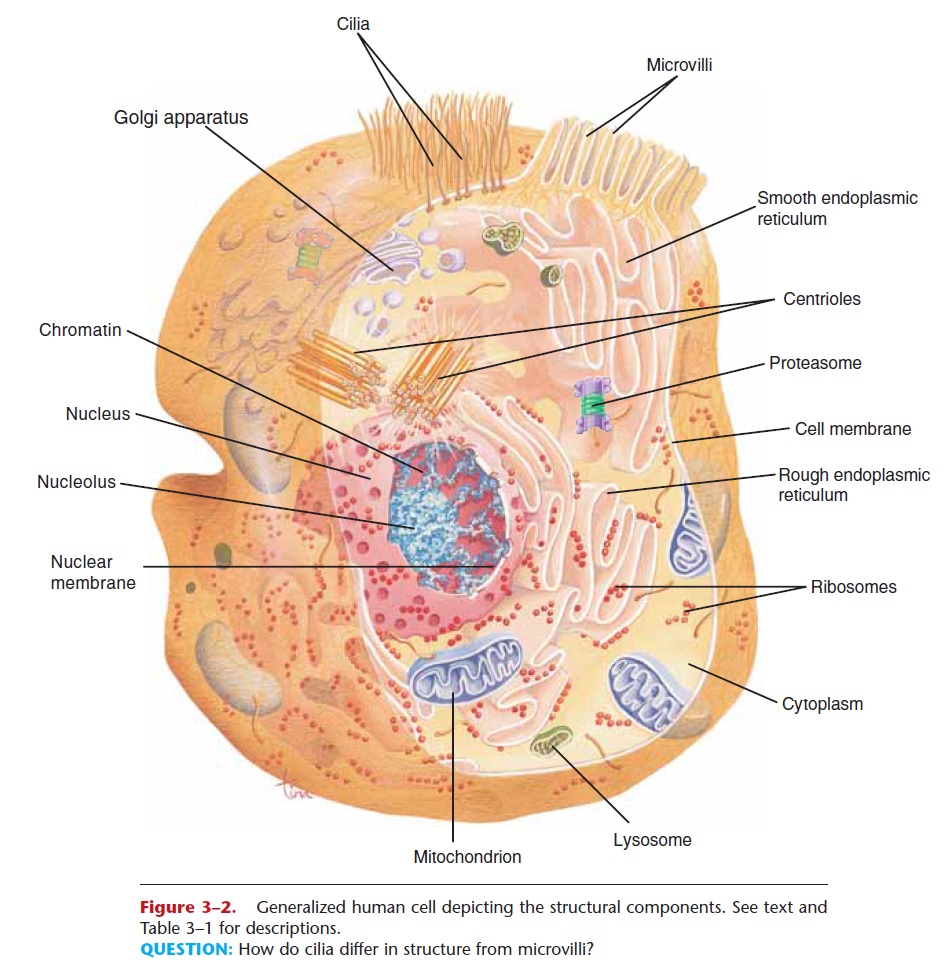Chapter: Essentials of Anatomy and Physiology: Cells
Nucleus - Cells
NUCLEUS
With the exception of mature red blood cells, all human cells have a nucleus. The nucleus is within the cytoplasm and is bounded by a double-layerednuclear membrane with many pores. It contains one or more nucleoli and the chromosomes of the cell (Fig. 3–2).
A nucleolus is a small sphere made of DNA, RNA, and protein. The nucleoli form a type of RNA called ribosomal RNA, which becomes part of ribosomes (a cell organelle) and is involved in protein synthesis.
The nucleus is the control center of the cell because it contains the chromosomes. Even with a microscope, the 46 chromosomes of a human cell are usually not visible; they are long threads called chro-matin. Before a cell divides, however, the chromatin coils extensively into visible chromosomes. Chromo-somes are made of DNA and protein. Some chromo-somal proteins provide the structural framework for the coiling of the chromatin into chromosomes so that cell division can take place. Other chromosomal proteins help regulate the activity of the DNA. Remember from our earlier discussion that the DNA is the genetic code for the characteristics and activities of the cell. Although the DNA in the nucleus of each cell contains all of the genetic information for all human traits, only a small number of genes (a gene is the genetic code for one protein) are actually active, or “switched on,” in a particular cell.
These active genes are the codes for the proteins necessary for the specific cell type and its functions. For example, the gene for insulin is present in all human cells, but only in certain islet cells of the pancreas is the gene active or switched on. Only in these cells is insulin produced. How the genetic code in chromosomes is translated into proteins will be covered in a later section.

Figure 3–2. Generalized human cell depicting the structural components. See text and Table 3–1 for descriptions.
QUESTION: How do cilia differ in structure from microvilli?
Related Topics